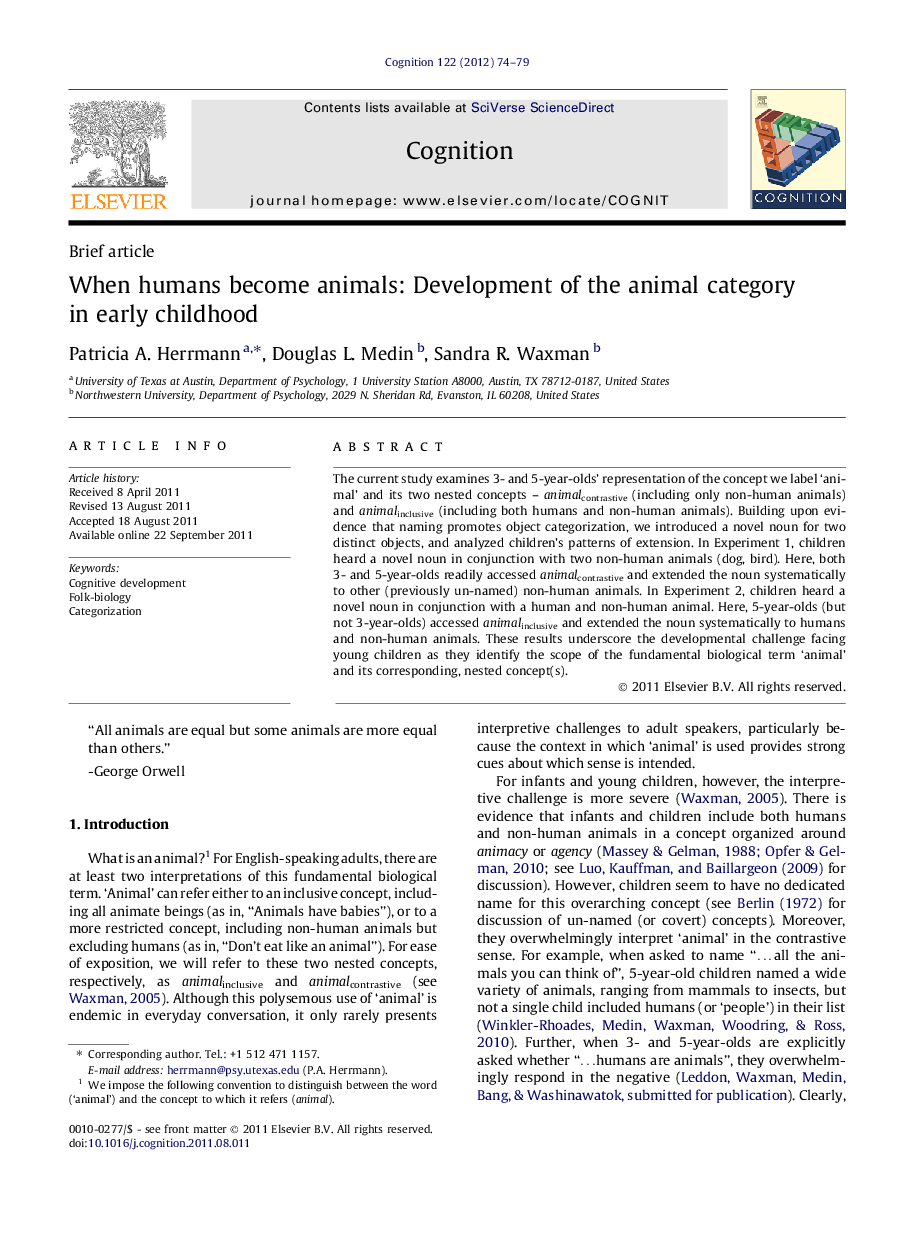| Article ID | Journal | Published Year | Pages | File Type |
|---|---|---|---|---|
| 926940 | Cognition | 2012 | 6 Pages |
The current study examines 3- and 5-year-olds’ representation of the concept we label ‘animal’ and its two nested concepts – animalcontrastive (including only non-human animals) and animalinclusive (including both humans and non-human animals). Building upon evidence that naming promotes object categorization, we introduced a novel noun for two distinct objects, and analyzed children’s patterns of extension. In Experiment 1, children heard a novel noun in conjunction with two non-human animals (dog, bird). Here, both 3- and 5-year-olds readily accessed animalcontrastive and extended the noun systematically to other (previously un-named) non-human animals. In Experiment 2, children heard a novel noun in conjunction with a human and non-human animal. Here, 5-year-olds (but not 3-year-olds) accessed animalinclusive and extended the noun systematically to humans and non-human animals. These results underscore the developmental challenge facing young children as they identify the scope of the fundamental biological term ‘animal’ and its corresponding, nested concept(s).
► We investigate early conceptions of the place of humans in the biological world. ► Task systematically accesses categories of 3- and 5-year-olds. ► Confirms children’s appreciation of a category of animals that excludes humans. ► Reveals young children’s difficulty accessing an animal category that includes humans. ► Impacts theories of how core concepts in infancy become integrated over development.
